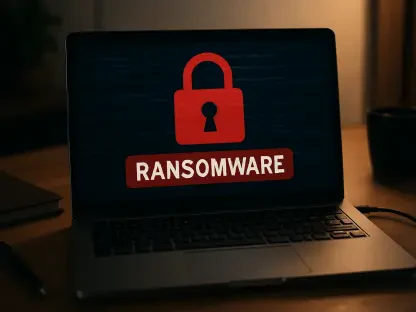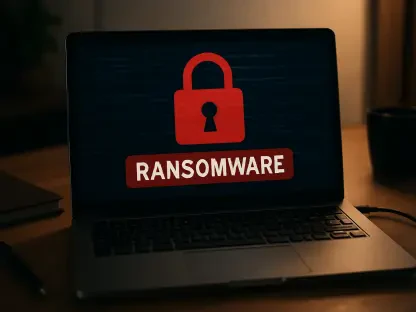Rupert Marais is at the forefront of cybersecurity, specializing in endpoint and device security, devising robust cybersecurity strategies, and managing extensive network infrastructures. With an ever-evolving threat landscape, Rupert’s insights into Rapid7’s latest research offer crucial understanding into how cyber threats are manifesting in 2025. As cyber threats evolve, safeguarding vulnerable endpoints and implementing strategic defense mechanisms have never been more pertinent.
Can you explain the main findings of Rapid7’s research on initial access techniques in Q1 2025?
Rapid7’s research highlighted that in Q1 2025, stolen credentials topped the list as the leading cause of compromises, specifically when multi-factor authentication (MFA) was not employed. Over half of the breaches were due to this oversight. They’re emphasizing that the lack of comprehensive MFA implementation leaves critical gaps in security.
What percentage of compromises in Q1 2025 were due to stolen credentials without MFA?
Stolen credentials without MFA were responsible for 56% of the compromises. That’s an alarming statistic because it indicates that more than half of security breaches could potentially be mitigated with the fairly straightforward inclusion of MFA.
Why do researchers believe stolen credentials will continue to be a dominant access technique?
Researchers argue that stolen credentials will likely remain prevalent because many organizations still haven’t implemented MFA across all accounts. This leaves a persistently exploitable weakness in their defenses, creating low-hanging fruit for cyber attackers.
How did vulnerability exploitation rank among initial access methods in Q1 2025?
Vulnerability exploitation was the second most common method, accounting for 13% of initial access vectors. Despite wide recognition of these vulnerabilities, organizations often struggle with timely patching and mitigation.
Can you describe the Fortinet vulnerability (CVE-2024-55591) and its potential impact?
This Fortinet vulnerability involves a race condition in the authentication process, allowing attackers to execute commands as the super_admin user on FortiOS and FortiProxy appliances. The impact can be profound, potentially allowing deep administrative access to sensitive areas, such as firewall dashboards, which hold key network configurations and user data.
How did attackers leverage the Fortinet vulnerability to gain access?
Attackers exploited this flaw to create deceptively legitimate local and administrator accounts. By doing this, they could access comprehensive device information and network traffic, thereby extending their control and surveillance capabilities within the compromised network.
What other initial access techniques were highlighted in the Rapid7 report?
Other techniques included exposed remote desktop protocol (RDP) services, SEO poisoning, and remote monitoring and management (RMM) tools. Each accounted for about 6% of incidents, showing a diverse range of entry points utilized by attackers.
Why are RDP services frequently targeted by cybercriminals?
RDP services are particularly popular with attackers because they’re often misconfigured, leaving them improperly exposed to the internet. This makes them easy targets for brute force attacks or exploitation attempts, especially if strong passwords and MFA aren’t enforced.
How do RMM tools contribute to initial access in cyberattacks?
RMM tools, which are designed for convenience in remote device management, can be weaponized by attackers. Once accessed, they can use these tools as a foothold, deploying malware or escalating their attack within a victim’s system, often leading to ransomware incidents.
What is SEO poisoning, and how has it been used in cyber attacks?
SEO poisoning manipulates search engine results to steer users toward malicious sites. Attackers purchase ads to ensure their malicious sites rank highly, misleading unsuspecting users into downloading harmful software, which can lead to broader exploits like data theft or ransomware.
Can you provide an example of an attack involving SEO poisoning?
One notable case involved victims searching for RV tools, leading them to top-listed malicious websites. This deceptive strategy culminated in victims installing incorrect software, which then escalated into full-blown ransomware attacks.
What is BunnyLoader, and why was it significant in Q1 2025?
BunnyLoader emerged as the top malware threat in Q1 2025, serving as a MaaS loader used across several industries. Its ability to perform a range of malicious activities, like credential theft and keylogging, made it a versatile tool for cybercriminals.
In which industries was BunnyLoader most frequently used as a payload?
BunnyLoader was widely deployed across industries such as manufacturing, healthcare, business services, finance, and retail, demonstrating its broad applicability and impact across multiple sectors.
Which industry was the most frequently targeted by cybercriminals in Q1 2025?
Manufacturing took the hit as the most frequently targeted industry, accounting for 24% of incidents. This emphasizes the critical need for strengthened defenses in sectors dealing with high-stakes, tangible outputs.
Can you explain the implications of not using MFA on accounts for organizations?
Not using MFA opens up organizations to a significantly higher risk of credential-based attacks. Without this layer of security, even a minor lapse, like phishing or password reuse, can lead to unauthorized access and potential breaches.
How might organizations better protect themselves from credential theft and vulnerability exploitation?
Organizations can enhance their protection by implementing comprehensive MFA across all accounts and ensuring all software and systems are regularly updated and patched. Continuous monitoring for exposed services and robust employee training can further reduce their vulnerability to these threats.









